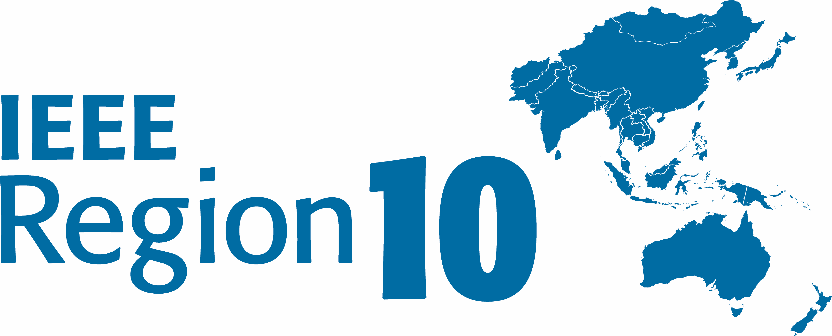Prepared by: Ramneek Kalra, IEEE Impact Creator and YP & Shailesh Prabhu, IEEE YP

A group of IEEE Young Professionals & Impact Creators gathered on 29th November 2020 (10:00AM – 11:30AM IST) to create awareness on technology and form a collaborative environment by initiating “Quarter Tech Talk Table 1.0 (QT3)” in the form of a panel discussion on the topic – “Technology for Public Safety”.
Motivation: To create a broad collaborative group of Young Professionals and Impact Creators to share some insights on cutting-edge technologies to all technology enthusiasts by having a panel discussion. The primary motivation of QT3 comes from the IEEE Strategic Plan 2020-2025 which inspires us to conduct this event with no boundaries. This provides opportunities to volunteers who collaborated to make this event a grand success.
Objectives: The objectives of QT3 are as stated below:
- Creating a broad collaboration for sharing knowledge of Industrial Technologies.
- Creating a bridge to connect IEEE Young Professionals through this activity for career and professional development.
- Sharing opportunities for elevating ideas using research-based oriented learning.
- Creating an open forum for discussion on recent technological advancements and challenges.

Event Details:
In the 1st Edition of QT3, prominent IEEE Young Professionals and Impact Creators across the globe came together for a panel discussion as listed below:
- Aakash Bansal (PhD Researcher at Loughborough University, UK)
- Shailesh Prabhu (Senior 5G Developer at Wipro Limited, India)
- Ramneek Kalra (Project Engineer at Wipro Limited, India)
- Bhagya Samarakoon (AdCom Member, IEEE WIE Singapore Section, Singapore)
- Kirthika Senthil Kumar (AdCom Member, IEEE WIE Singapore Section, Singapore)
- Pia Torres (RoboTeam Founder & Director, IEEE HAC Member, Argentina)
Moderators:
- Wathmini Sharika (Production Engineer, Central Industries PLC, Sri Lanka)
- Naveendra Jayakody (Electrical Engineer, Sunleaf Solar Solutions, Sri Lanka)
General Chair:
- Dr. Prashant R. Nair (Associate Professor, Amrita Vishwa Vidyapeetham, Coimbatore, Tamil Nadu, India)
Points of Discussion
Some of the key takeaways from this 1st Edition of QT3 are as listed below:
- Eliminating misconceptions in cutting-edge technologies for public safety including 5G, robotics and edge computing.
- Since the panel discussion was conducted on 25th November 2020 which is also the International Day of Elimination of Women Violence, the panelists pointed out how technology can be used to eliminate women violence from public places and insecure areas. In the same regard, the panelists also highlighted critical parameters enabled by technology including Reliability, Affordability, Latency and Feasibility.
Round 1 (Open Discussion on Technology for Public Safety):
- One of the panelists highlighted about the application of Robotics during this pandemic situation and how it has been used to enable public safety by means of examples like hospital spray robots, shopping mall security robots, elevator cleaning robots etc. Adding to that, having cleanliness robots and robots for social distancing monitoring in public places were among others.
- From the healthcare industry perspective, one of the panelists highlighted two key factors which is applying robotics and making lives better. One of these was having robotics in the swabbing process of patients for COVID19 which can be automated thereby reducing human interaction.
- From the edge computing perspective, one of the panelists put pointers ahead, explaining what can be achieved if integration of 5G and IoT is done. Adding to that, edge computing can provide the base framework, which industries are using and implementing in their “Back to Office” infrastructure to have full monitoring ability on the employees’ activity within the premises.
Round 2 (Panel Q&A Discussion):
- With 5G using high frequency radiations, one of the panelists highlighted that this is because of the increase in the number of devices we are using these days, which he mentioned is directly proportional to the bandwidth i.e. the more the devices, the more bandwidth is required to serve the users. This increases the capacity of the network and thereby fulfils connectivity demands. He also highlighted about the researches going around along with the expectations from 6G frequency bands in numerous academic universities and industries. Putting the misconceptions held by a lot of people about 5G, panelist shared the example of his own experiment of feeling the radiation between a smart phone and an antenna with a microwave oven to shut the point of “5G causes cancer”. Evidently, oven causes more danger than our own smart phone.
- Adding to above points, another panelist pointed out one of the common parameters in the adoption of any technology by the telecommunication units is the compliance to Specific Absorption Rate (SAR), which is being approved by ITU. Adding to that, he highlighted that 5G is not an exception to this and will be safe for users giving a proper and safe way of communication. He added the applications of 5G in mission-critical services including emergency recovery, remote surgery and Push to Talk. He also pointed out how 1/10th reduction of latency in 5G compared to the existing 4G network can disrupt industry verticals and enable critical operations. Self-driven car is one of the classical examples to highlight latency as a prime factor for responding to emergency situations and thereby endorsed 5G as a technology for future.
- Highlighting on the popular question “Will Robots be taking jobs of Humans in coming years?” – One of the panelists in robotics domain pointed out her personal experience of having this question asked from one of the immigration officers from one country, where she had visited for a robotics conference. She highlighted the possibilities of having more high-skilled jobs in robotics organizations. Also, she added that the jobs will be taken up by robots where humans cannot achieve the outcome, or where minor jobs including floor cleaning/maintenance etc. can be automated. In an optimistic way, she added that it will be a win-win situation for both robots & humans if humans can be trained well to work for these high-skilled jobs for working in robotics companies.
- Coming to the healthcare industry and how robotics can work on the reliability and trust value among doctors, one of the researchers from the panel pointed it rightly by mentioning it is not the robots who took the action often in healthcare, but it depends upon the doctor whether to trust that action or not. She added that it is all about training the control system of robot to act accordingly in the repetitive and smart way. She mentioned that robots cannot replace the doctors’ experience of using the tools and how much pressure needs to apply on tissues while in open surgery. Putting those statements in the robotics trust value, she mentioned the recent transition of having research on Real-Time Feedback for Surgery purposes done by robots to get the confidence back to doctors. With that, she concluded that “ultimate decision maker will always be humans”. Robots are intended to assist the critical operations and make life easy.
- At the end of Round 2, another panelist highlighted how IoT and edge computing can help in turning up the possibilities of having schools/industries open again after this pandemic situation. He started with sharing his own experience of his organization by having Android application and IoT sensors deployed over numerous spots including entrance gate, lift panel, breakout rooms near coffee machine etc. He added that in the upcoming days, the transition of using smart devices for smart monitoring of campus by not touching objects around them is going to help against infections.
Round 3 (During a natural calamity or a crisis, most of the technology seems to be of no use. How does technology assist in such scenarios?):
- Altogether every panelist put their own technology aspect how their own domain can put a proactive approach to natural calamity by highlighting some of the prime factors including prediction using AI and ML, deployment of smart sensors around cities/countries borders, application of robotics in rescuing people from emergency locations etc. With that, adding to economic feasibility and having Technology Acceptance Ratio (TAR) to be counted on priority always comes with trade-off. This trade-off of not accepting technology can be eliminated by having smart machines deployed with very less amount of latency which will give outcome in very demanding way.
“Ask the Panelist”: Under this last section of this Tech Talk, virtual floor was open for asking queries on the basis of discussion to the entire panelists, under which one of the attendees asked “How the deployment of technologies like 5G and others can be accurately compared to the theoretical promises, especially in rural area?” In response, the panel mentioned that it will considerably take much time ahead to implement at that level, but lot of telecommunication companies are already in process of pushing the bars up. This enhancement in frontline will surely help us to accept the technology in a very accurate way and especially in the rural part of any nation across the planet.
With the ending of this QT3 1.0, the General Chair put together the thank remarks and shared the next QT3 2.0 date, which is tentative 7th February 2021. Registrations are already open for the QT3 at: https://forms.gle/x2ost6UqqBGiqtxJ6

